To-Do List You Should Do before Selling Your Property!As a landlord and property owner, it is imperative that the unit you are renting to potential tenants is not only spacious and aesthetically pleasing, but also safe and well-functioning. Complaints of leaking roofs or clogged pipes will cost longer in the long run to repair as not only do you risk losing unhappy tenants, but because one problem is likely to compound into several more mishaps. A leaking roof can also cause mould growth, damaged wallpaper or paint chipping off. The sooner these issues in your property is thoroughly examined and renovated, the easer your business will be when leasing or selling your property, satisfied customers. Furthermore, the last thing anyone wants is the risk of harm to someone’s health. Mold allergies, non-functioning fire systems, outdated boilers and pipes about to burst can not only injure someone, but also threaten someone’s life. Home is meant to be a safe, comfortable place for anyone, and the following checklist will make sure that this is so for your potential clients. 1. Water leakage detection Do you suspect that there water stains on the ceiling or walls? Is there an area where paint keeps chipping off? Is there frequent condensation on windows? Moisture control is crucial to making sure the home is well insulation, energy efficient and mold resistant. Addressing leaking taps and pipes can save up to 2000 gallons of water per year! A way to detect if there are any large leaks is by using the water meter. Turn off all taps and appliances that use water, both inside and outside the house, then take note of the meter reading. After 20-30 minutes, if the reading changes, it could be due to a large water leak that should be found and fixed immediately. Smaller leaks, however, can go unnoticed and are difficult to detect. Since water leaks can come from many sources (taps, tub, toilet, water machines etc.), it saves a lot of time and money to hire experts to check the house thoroughly for water leaks. GTA Resoration’s water leak detection is an example of a good service to get this done. From there on, if there are leaks that are easily repairable, such as a leaky faucet, simply fix it yourself. Having a new faucet is also attractive and a bonus point for selling your home. For major leaks, it is better to hire a service to get it fixed. Waterproofing the house is another option to consider. Chances are, Water leaks will continue to occur throughout the year. Many leaks will go unattended for years and cause huge water losses in the long run. Unnoticed water leaks can also lead to structural damage and mold growth, which compound the amount of problems in the building that you may end up paying a lot of money for. Waterproofing may initially seem like a costly process, but it saves a lot of time and money in the long run as it prevents future leaking and mold formation. 2. Is there mold growth or chances of mould growth? Chances are, there is already some mold in the house, especially in the bathroom. Having a mold removal service like that of GTA Restoration is an excellent choice to rid the property of any mold growth. The next step is to prevent this further. Many people suffer from mold spore allergies. Furthermore, mold spores can react with substances in the air to create toxins that take the form of black mold spores that can cause respiratory illnesses and asthma in those living among it. Two of the main causes of mold growth are water leakages and roof leakages (check number 2 and 5 on this list). If you have decades old carpeting or a stack of ancient newspapers, throw them away. It is highly likely that mold (among many other nasty entities) are thriving there already, completely unnoticed. Buying a humidity meter can make it easy to keep humidity levels between 30-60%, which is the safe zone to avoid mould growth. Improving air circulation is also a great away to make an environment unsuitable for mould growth. Install door holders to keep doors open between rooms, clean out ventilation shafts and move furniture away from windows and walls. The kitchen, bathroom and laundry room must have ventilation installed that is functioning and well cleaned. Check the drainage system and exterior of the house. Does the water slope away onto the road or does it stay and collect around the house? Make sure there are drainage pipes to collect water from the roof and direct it away from the house. If you are renovating the walls of the house, buy mold resistant paint and give the walls a coat of some neutral color. Remove old wallpaper (which mould can grow behind), clean the walls and paint it freshly with mold resistant paint. Not only does this mold-proof the house, but it also gives an appearance that isn’t distracting and is attractive to buyers. 3. Is the house electrically safe? Ontario’s Electrical Safety Authority reported that nearly 110 children under the age of 15 are rushed to emergency due to electrical injuries every year. The number of non-fatal electrical injuries is even higher. Making your property’s electric circuits safe is perhaps the most important item on your checklist-especially if you plan to sell to a family with children. Here are some of the things you can look out for: Burn marks on sockets; if you see any of these around the house/building, have it looked into immediately. Worn out or broken cables. Each and every cable and lead should be thoroughly examined to make sure it isn’t close to water sources or heat sources such as the stove, isn’t in a place where it can be touched or tripped over easily and is properly covered and insulated. Broken outlets or visible colored wires. All wires should be held firmly inside the socket. The socket should be checked to see that there aren’t any naked live-wires or broken wires. It is a good idea to invest in safety proofing all the sockets. This will greatly attract buyers with children. 4. Is the roof leaking? Leaving a leaking roof can end in many ways-and none of them are good. Except for the annoying breeze of bitter cold air that can come through and the dripping of water into the household after every rain spell (which is more than enough to turn away buyers immediately), leaking roofs bring with them an abundance of health hazards. The most dangerous of these is the risk of fire. Water getting under the roof can make its way into the electrical circuits and wiring in the ceiling. Even if it doesn’t cause a fire, it can damage many electrical outlets in the house and a house without functioning electricity is a house no one will live in. Water can also corrode wooden roof support and wall framing. This deterioration, if left alone long enough, could cause the roof’s foundations to collapse. 5. Fire safety Test all present smoke alarms and install new ones in each and every room in the house. This is the most important step of preparing your property for sale. Fire extinguishers should be kept around the house where the likelihoods of a fire damage occurring is highest and is easily accessible in the case of an emergency. Get the boiler and gas pipes checked by the gas provider, and ask them to take a look to make sure there aren’t major fire hazards lying around that could be removed.
All of this may sound expensive, time consuming and maybe even unnecessary to some, but it is crucial to look at the long term consequences of neglecting any of the issues listed. Major water leaks, unhappy tenants and an actual fire are things that will not save you any money or time and can be avoided by taking the necessary precaution before selling a safe, energy efficient property to a happy family. What you need to know to protect your home from cold weather water damage , Winter can be a dangerous time of year for your home. Water can infiltrate your home and cause damage once the temperatures dip below freezing. Water pipes can freeze and burst, ice dams can form on your roof, and melting snow can infiltrate your home. Spend the colder months staying warm and bonding with family and friends instead of worrying about the risk of water damage. Consider this list of things that you can look out for and prepare against before the temperatures get too cold. Preventing Your Pipes from Freezing In the winter months when the temperatures begin to dip, your water lines become increasingly likely to face catastrophic failure. Water lines that run along outside walls, in attic spaces, or inside of crawl spaces are the most vulnerable to the cold. You will also need to pay close attention to any outside faucets that are not rated for the cold temperatures. If your pipes become cold enough to freeze than it is likely they will burst, like a frozen can of soda pop. This is especially likely for outdated and poorly installed plumbing pipes. Here are a few ways to help you prevent that from happening.
Ice Dams Ice dams form when warm air from your attic melts the snow along your roof. The water rolls down into the eaves of your roof where it is cooler, and it can refreeze. Or the water can pool up around clogged gutter systems where it will freeze over and prevent the water and snow from leaving the roof. This leads to water potentially seeping up under your shingles and can causing damage to your roof. You will need to prevent or correct this problem to avoid having potential issues in the future. Here are some ways to help prevent it.
When the Snow Melts When spring arrives, you may have a ton of melting snow to deal with. This can cause a whole list of problems itself. Water will try and seep through your foundation and into your home if you allow it. Here are some ways to avoid this problem.
What Else Can You Do to Prevent Water DamageSometimes there are less obvious things that you may need to do to help your home whether in the cold months. Here are a few things that will help make it a little bit easier.
Who Do I Call a Restoration Professionals What do you do when the worst has happened, and you have water damage in your home? Whether you have some water seeping down a wall from the attic caused by an ice dam, or if you have a flooded basement from a frozen and burst water line, you need to call a professional company. A company that can guide you through the entire process from incident to restore. Call GTA Restoration today and let them help you get back to normal
How to Fix Water Damaged Walls?It doesn't matter if your house is old or new, you're bound to face water damage at some point in your life. If you've already experienced a water leak in the past, there is a high chance you'll experience it in the future as well. Plumbing leaks and water damaged walls are inevitable. Why? Because the plumbing system in your house is operating non-stop. Pipes and appliances that use water may eventually start leaking due to the constant use. Plumbing leaks waste a lot of water. In fact, over 10,000 gallons of water is wasted every year in an average household's water leaks. Water damaged walls may also result due to floods and storms. This kind of water damage is easy to identify. However, most of the time, the cause of water damage isn't always so obvious. If left unaddressed, water damage can destroy your plumbing system and cause structural issues to your drywall. If you found water damaged walls in your house, it's safe to assume there's more damage than you can see on the outside. But the good news is that water damaged walls are repairable. You can call the professionals to repair the damaged walls for you. Common Signs of Water LeaksIf you're reading this guide, you might have already spotted the water leak somewhere in your home. Yet, sometimes, water leaks may be hidden. These kinds of leaks are more dangerous. So, it's better to know the common signs of water leaks before it's too late. The signs of water leakage include:
It's possible that the damage has already occurred to the drywall by the time you spot these signs. The gypsum drywall turns into a huge problem when it gets wet. The reason is that gypsum drywall is porous and soluble in water. Water leakage leads to the growth of mold, bubbling, warping, stains, and deterioration. When the water reaches the drywall, it makes your walls and ceilings look unsightly. Eventually, it causes the wallboard to collapse and fall apart. Steps to Repair the Water Damaged WallsFollow these 7 steps to fix the water damaged walls:
You need to pay attention to your plumbing system and locate any possible water leaks. Faucets in the kitchen and bathrooms, showerheads, hot water heaters, washing machines, refrigerators, freezers, garbage disposals, and dishwashers are prone to leaks. Use your eyes and ears to detect the water leaks. Look for soft spots and soggy areas, and hear if there is any sound of water leakage. Moreover, you can check your water meter and water bills. The best way to confirm water leakage is to check your water meter. Turn off all the faucets and appliances that use water. Note your water meter readings. Avoid using water for at least an hour. Now, check the water meter readings again. If the reading is not the same, there's water leakage. By looking for the above-mentioned signs of water leakage, you easily locate the leak. Once you do that, you have to fix the water leak. If your faucet is leaking, you can replace the washer and fix the leak. However, if any of the plumbing pipes are leaking, you can apply epoxy putty as a temporary fix.
However, if the wall has absorbed a lot of water, you should get a dehumidifier and some towels. Run the dehumidifier and start blotting the walls carefully. This will help to remove the moisture. But be sure not to press too hard as the drywall will already be too soft. If the Water Damage Toronto is due to flooding, you should rent out a large-capacity dehumidifier to thoroughly dry out the walls, surrounding wood, and carpets.
Next, you have to start removing the damaged sections of the wall. Don't forget to put down tarps and drop cloths. It'll make clean up easier for you because the tarps will catch the removed pieces, dust, and debris. Now, take drywall saw to cut out the damaged section. Make sure you don't cut any wires or damage the plumbing while cutting the wall. Also, it's important to note that cutting out the damaged part in the shape of a square or a rectangle is highly recommended. It'll help you fit the patches easily and make the blending of the mud and taping work smoother for you. How to Manage Damage to Your Home? After removing the damaged section, check the studs and insulation to see whether they're completely dry or not. By doing so, you can prevent the new piece of drywall from getting damaged due to the already present moisture.
Water damaged drywalls are the perfect breeding spots for molds. Sometimes, the drywall has no structural defects in spite of the water damage. However, there is a high chance it might be infected with black mold growth. So, once you have removed the damaged sections, disinfect the area and kill the mold. You can use diluted chlorine bleach to get rid of the mold and even the small water stains. Carefully scrub the drywall, and within a few hours, the mold will be killed.
In the next step, you have to take the measurements of the wall from which the damaged section has been removed. Take 2 to 3 measurements and take the average. You can use this average measurement to cut a replacement piece of drywall. It's better to cut the replacement piece 2-inch longer and 2-inch wider than the hole. Now, lay this replacement piece down with the backside facing up. Take a pencil and draw a line by measuring 1-inch from all four sides. Your replacement piece is ready, and it'll fit perfectly. To fit the replacement piece, you have to place 4 drywall clips around the hole and secure them with a drywall screw. But be careful not to over-tighten the screws. Still, if the replacement piece isn't a perfect fit, place it against the hole and cut it out using a utility knife.
Take a mesh or paper tape and put it over the seams. Now, start to apply the first coat of the mud (a.k.a. joint compound). Properly cover the joint and blend the mud. It'll be followed by priming and painting. Spread out the mud about 4 to 6-inches from the repaired area and let it dry for 12 to 24 hours. When the first coat is completely dry, wear a dust mask and take fine-grit sandpaper and a sanding block to sand off any ridges and high spots. You'll have to apply a second coat as well. But before you do that, use a vacuum and wipe off the remaining dust. Now, apply the second coat, blend it properly, and let it dry again for 12 to 24 hours. Again, sand off the ridges. The dried mud absorbs a lot of moisture, so you need to coat it with a primer that'll effectively seal the area. After that, you can start painting the newly repaired section. You can either use a roller or paintbrush to paint the repaired area. Pour the paint into the paint tray and coat your paintbrush or roller. Then use a zigzag pattern to paint the surface to give your paint a flat finish. After blending the seams, priming, and painting, the water damaged wall will be completely fixed.
Finally, take a shop vacuum and clean up all the dust and debris. Carefully pick up the tarps you had laid down and be sure not to spread around any pieces, debris, and paint on the tarps. Don't forget to clean the paintbrushes and dispose of all the used paint cans. You can use warm, soapy water to thoroughly clean the tools, paintbrushes, and roller covers. Once you have done all that, it's time to remove the painter's tape. You can prevent damage to the fresh paint by removing the tape at a 45-degree angle. How Can GTA Restoration Help You?If you can't fix the water damaged walls yourself, GTA Restoration can do the job for you. We have a team of licensed and highly-experienced professionals who will expertly assess the water damage, locate the cause, and repair the damaged walls. Don't wait until the damage gets worse. Contact us right now and save yourself from a huge emergency plumbing disaster. Water Damage Restoration: |
Restoration
|
- Emergency Response 24-7
- 647-692-3155
- Service Toronto
-
Restorations
- Disaster Restoration
- Disaster Reconstruction
- Carpet Restoration
- Art Restoration
- Catastrophe Cleanup
- Wind, Tornado and Hurricane Damage
- Hail Damage
- Environmental Cleanup
- Soft Content Restoration
- Document Recovery
- Content Handling, Cleaning & Storage
- Waterproofing
- Foundation Repair
- Crawl Space Repair
- Crack Repairs
- About Us
- Free Advice
- Special Offers
- GTA Restoration
- Toronto
- Asbestos Removal Services Oakville
- Soot Cleanup Oakville
- Sewage Backup Scarborough
- Blog
- Water Damage Restoration East York
- Water Damage Restoration
- Black Mold Remediation Mississauga
- Mould Inspection Mississauga
- Thank you
|
|
|
|
|
|
|
Check your card balance!
|
|
|
Copyright © 2009 - 2024 GTARestoration.net All Rights Reserved. For more Info, visit: "GTA Restoration"
Designed by GTARestoration
Designed by GTARestoration





























 RSS Feed
RSS Feed








